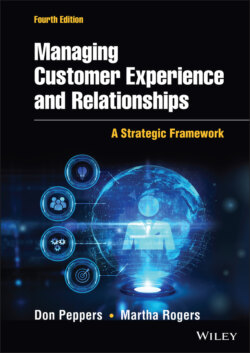Читать книгу Managing Customer Experience and Relationships - Don Peppers - Страница 49
CJM Outcomes
ОглавлениеThe outcomes of customer journey mapping are varied. Most at least provide insights into the company that help to bring a reality forward that it's not what a company has designed and wants to sell but what the customer wants to buy. In addition, it exposes where to spend resources to ensure that the company is competitive and has its finger on the customers' pulse. Some of the more tactical outputs tend to be:
Low-hanging fruit. Quick fixes or opportunities that don't require a lot of time or resources to provide revenue or customer engagement/retention.
Performance metrics/dashboard recommendations. What key pivot points really make a difference versus sometimes too inwardly facing metrics.
Input into standard operating procedures (SOP) document. How you should be interacting, over what channel, and with what messaging and cadence. This ties to communication and precision campaign plans as well.
Road map initiative charters. Next steps for bigger projects.
Post-project planning for continuous improvement. Mapping will be revisited at frequent intervals to ensure that there is progress and to reveal other areas requiring improvement or offering opportunity.
Our goal for this chapter has been to give the reader a grounded perspective of how Learning Relationships enable enterprises to develop more personalized and collaborative interactions with individual customers. Our next step is to begin to understand the business sense of building a customer-strategy enterprise. Learning Relationships, after all, result in many pragmatic and financial benefits, not only for the customer but also for the enterprise that engages in them. The objective of increasing the overall value of the customer base by getting, keeping, and growing one customer, and then another and another, is achieved through these highly interactive relationships.
The enterprise determined to increase the value of the customer base will start with a commitment to increase customer value through better experiences and then move to implement the strategic levels of the Learning Relationship. The tasks needed to make this happen are: identifying their customers individually, ranking them by their value to the company, differentiating them by their needs, interacting with each of them, and customizing some aspect of the business for each. From the enterprise's perspective, these tasks are by no means chronological or finite. We will examine each of them more carefully in the next chapters.
